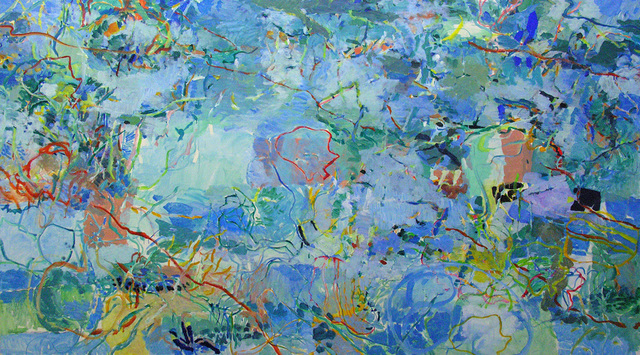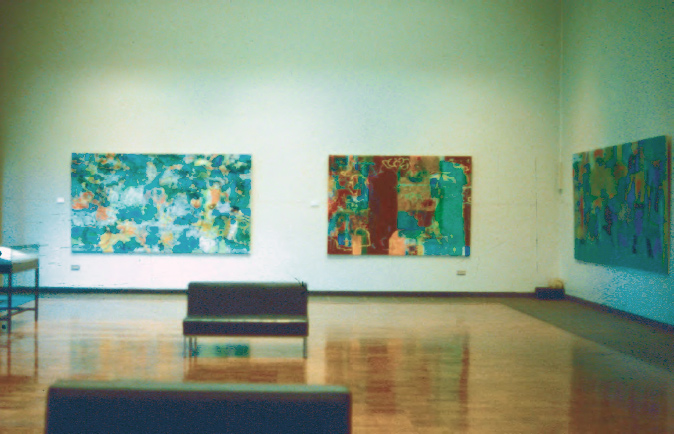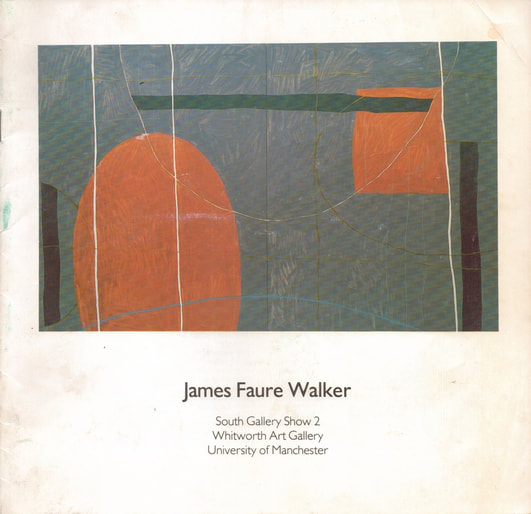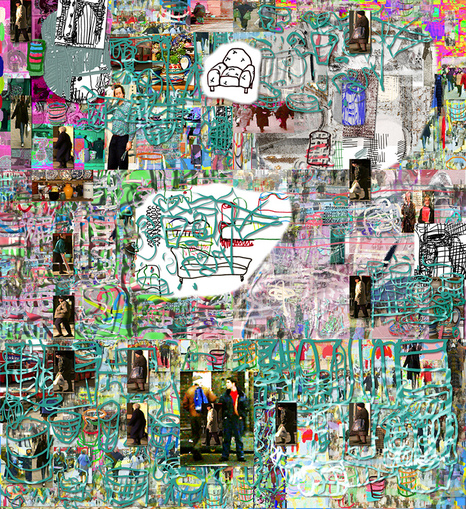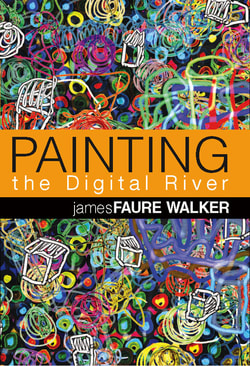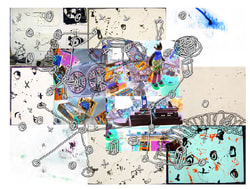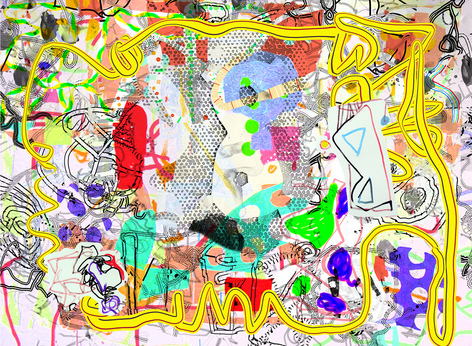REVIEWERS COMMENTS
1985
James Faure Walker at the Whitworth, Manchester
Heron Island 1984 170 x 305 cms, oil on canvas
“With their inbuilt uncertainty, their deployment of a large number of colours, their insistence that balance should be wobbly at best, they testify to a new set of preoccupations; not with easy representation, or the trickery of illusion but a state of perpetual discontinuity where metamorphosis is the norm and alternative versions of the same state of affairs multiply in the mind. Am I speaking of the paintings? Or the position in which they place the viewers?... Faure Walker’s paintings show that it is high time to weigh the consequences of "New Art" with its academy of contemporary masters. His doubt may lead to one of those careers which bridges older and newer practice, and which opens more doors than it closes."
Stuart Morgan, 1985, 'James Faure Walker at the Whitworth', Artscribe, September/October 1985, London. Reprinted in Stuart Morgan, (edited by Ian Hunt), 2007, Inclinations: Further Writings and Interviews, Durian Publications, London. 1988
Undecided: Lost in Aesthetics, Shopping and Kitchen Distractions,
1997 87 x 80, inkjet print "Based on digital photographs, often loosely linked by painterly, expressionistic gestures, his prints range from photomontages to painterly and almost abstract images. The best prints seem to possess a remarkable richness of surface … a tapestry effect built up from a multitude of overlapping layers...James is eloquent about the information revolution, towards which the art establishment is displaying all the awareness of an ostrich with its head in the sand.... he feels that the computer is at last breaking down the barriers between Fine Arts and other disciplines."
Brian Ashbee, 1998, 'Computers the Last Frontier?' Art Review, June, London. 2006“I believe this book is a must read for all artists from the most conventional watercolourists to those avant garde interactive, digital web-based installation artists. There is much wisdom and insight in these pages that, if understood, will not only result in an increase in quality art (perhaps even great art) but also a happier existence for artists generally.”
Rob Harle, reviewing Painting the Digital River, Leonardo Digital Reviews, 2006 2010A Song for Upper Street, 2004 74 x 91 cms, archival inkjet print
“His pictures are composed of elements from paintings, computer graphics, and photography, and the blend into one another to produce colourful compositions. The leave the viewer to guess which method was employed to create certain elements. Has this circle been painted? Or is it a photo? Was it drawn with a computer mouse? Walker’s characteristic style and his unique picture language are indications for his clear position and stringency as an artist. He shows us the future of painting, because when you look at his
works, they seem just as unimaginable without a computer as a photo is, nowadays. All this results in the blurring of definite borders. Or, to put it positively: what makes Walker’s art so appealing is the open integration ofdifferent media and methods into one work of art.`” Wolf Lieser, 2010, Digital Art, full-scale edition, Ullmann Publishing, Germany. 2014Another Dream of Summer 2013 74 x 102 cms, archival inkjet print
“James Faure Walker’s art is fundamentally about painting; the act of applying paint, whether it be digital or physical, to a surface. The pictorial elements of line, form, space and most of all colour work together to create an art that is appealing to the eye, yet intrigues and resonates with the viewer, staying with us long after we look away. Our image this month (Another Dream of Summer 2013) is no exception, it has a joyfulness and an exuberance which is refreshing from the norm of what we tend to think of as the origins of computer art - that is, a mathematical bias, based on logic or algorithm, which is often geometric in style.”
Catherine Mason, ‘Going with the Flow’, March 2014, British Computer Society 2015James Faure Walker, solo exhibition at the ARB, Cambridge
"This is a great exhibition, on for another few weeks, the aesthetic is all about unpredictability, it doesn't particularly matter what medium anything is in, it could have been movies or books or articles in magazines. and the visual invasion of the plain and functional architectural environment all the time is totally fine, the work can take it and in fact it seems even to like it. The asymmetry theme -- variations on the asymmetrical seeming like nature or life -- came right back to me a few minutes after leaving, and seeing the crazy placement of the windows in the much older Queen's College building."
Matthew Collings, August 27 2015 |
